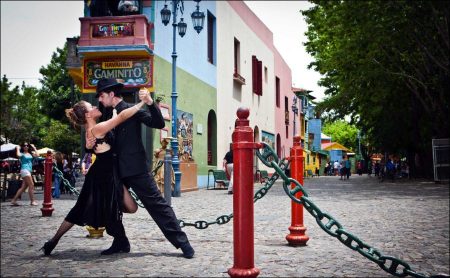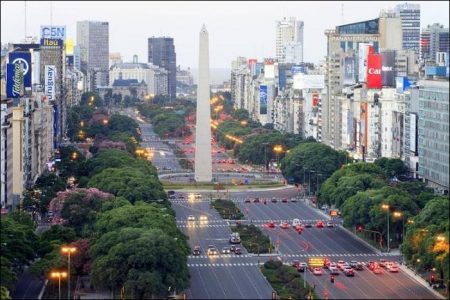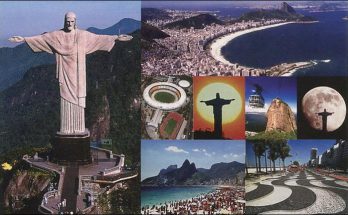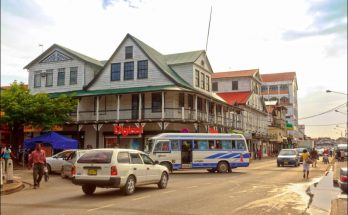Buenos Aires is the capital and largest city of the Argentine Republic. The city is located on the western shore of the estuary of the Río de la Plata, on the continent’s southeastern coast. The Greater Buenos Aires conurbation, which also includes several Buenos Aires Province districts, constitutes the third-largest conurbation in Latin America, with a population of around seventeen million.
The city of Buenos Aires is neither part of Buenos Aires Province nor the Province’s capital; rather, it is an autonomous district. In 1880, after decades of political infighting, Buenos Aires was federalized and removed from Buenos Aires Province. The city limits were enlarged to include the towns of Belgrano and Flores; both are now neighborhoods of the city. The 1994 constitutional amendment granted the city autonomy, hence its formal name: Ciudad Autónoma de Buenos Aires (Autonomous City of Buenos Aires). Its citizens first elected a chief of government (i.e. mayor) in 1996; before, the mayor was directly appointed by the President of the Republic.
Buenos Aires is, along with Mexico City and São Paulo, one of the three Latin American cities considered an ‘alpha city’ by the study GaWC5. Buenos Aires’ quality of life was ranked 81st in the world and one of the best in Latin America in 2012, with its per capita income among the three highest in the region. It is the most visited city in South America (ahead of Rio de Janeiro) and the second most visited city of Latin America (behind Mexico City.
Buenos Aires is a top tourist destination, and is known for its European-style architecture and rich cultural life. Buenos Aires held the 1st Pan American Games in 1951 as well as hosting two venues in the 1978 FIFA World Cup. Buenos Aires will host the 2018 Summer Youth Olympics.
Buenos Aires defines itself as a multicultural city, being home to multiple ethnic and religious groups. Also, several languages are spoken in the city in addition to Spanish, contributing to its culture and the dialect spoken in the city and in some other parts of the country. This is because in the last 150 years the city, and the country in general, has been a major recipient of millions of immigrants from around the world, especially from Europe, Asia and Latin America, making it a melting pot where several ethnic groups live together and being considered as one of the most diverse cities in Latin America.
Become a Boca fan
Ole, ole ole, ole. The most thrilling and visceral experience of any visit to Buenos Aires is probably donning a fluffy blue and yellow hat and bouncing along with the tribal fanatics of Maradona’s beloved team. The intoxicating display of the leaping and singing multitude is often more exciting than the game on the pitch. There is no more intense encounter than Boca Juniors playing their rivals River Plate. But any visit to Boca Juniors’ intimate Bombonera stadium will be an adventure that you’ll never forget. A word of warning, hang on to your wallet!
Frolic in a love hotel
Not quite as seedy as they sound, telos, as they are known in Buenos Aires slang, are rented by the hour and offer as much fun as you can have, well, with your clothes off. When you check into one of these albergue transitorios, identified by neon lights and a token shrub outside the door to offer the pretence of anonymity, you and a loved one can enjoy a couple of hours frolicking on water beds under mirrored ceilings, in all manner of themed rooms.
Witness the social coming of Christ
No, honestly. Every half hour on the quarter hour, a 20-metre plastic Jesus rises from the earth (also made out of plastic) at the wonderfully surreal Tierra Santa, the world’s first religious theme park.
Drink until the early hours
One of the kings of the bar scene is Gran Bar Danzón. Although the food is great, crawlers rarely look beyond the drinks menu. The cocktails are ingenious and the vast wine list is mostly available by the glass. If that booze isn’t enough for you, then browse through the Park Hyatt’s vinoteca (wine bar), which is home to over 3,000 bottles of Argentinean reds and whites.
Tango, tango and yet more tango!
Carlos Gardel was to tango what Elvis was to rock ‘n’ roll. He is probably the most prominent figure in the history of ballroom dance. A new house museum, the Museo Casa Carlos Gardel, celebrates his legendary years in Buenos Aires, and you can pay your respects to him at the Cementerio la Chacarita. If you want to give tango a whirl, head to the Centro Cultural Torquato Tasso, a serious venue in which respected artists perform regularly. If you prefer to dip and swirl members of the same sex, then the gay milongas are the place to be. La Marshall and Tango Entre Muchachos are excellent venues for queer tango.
Views: 185




